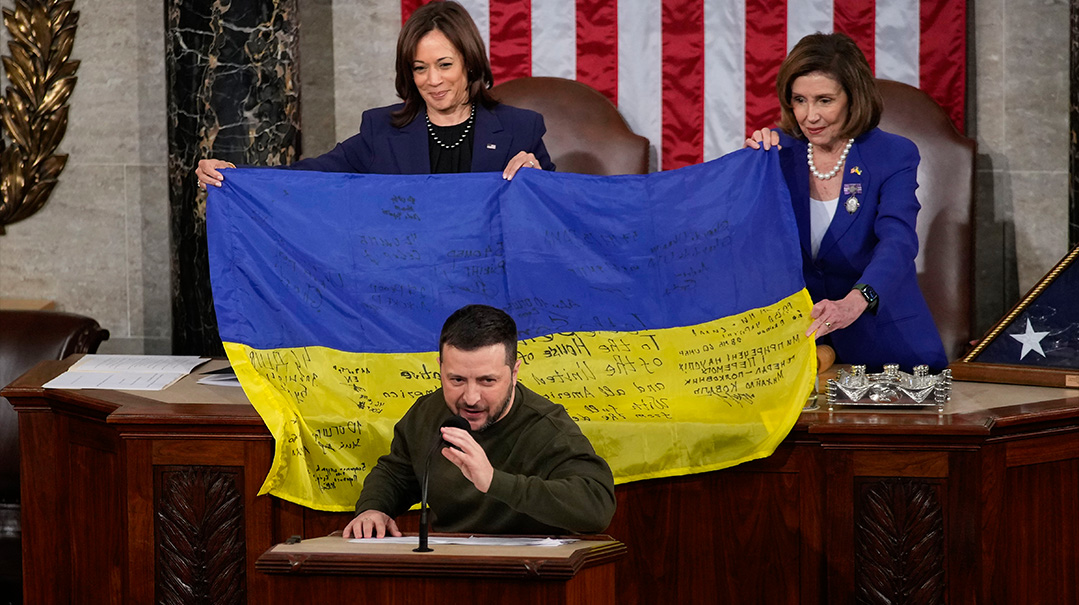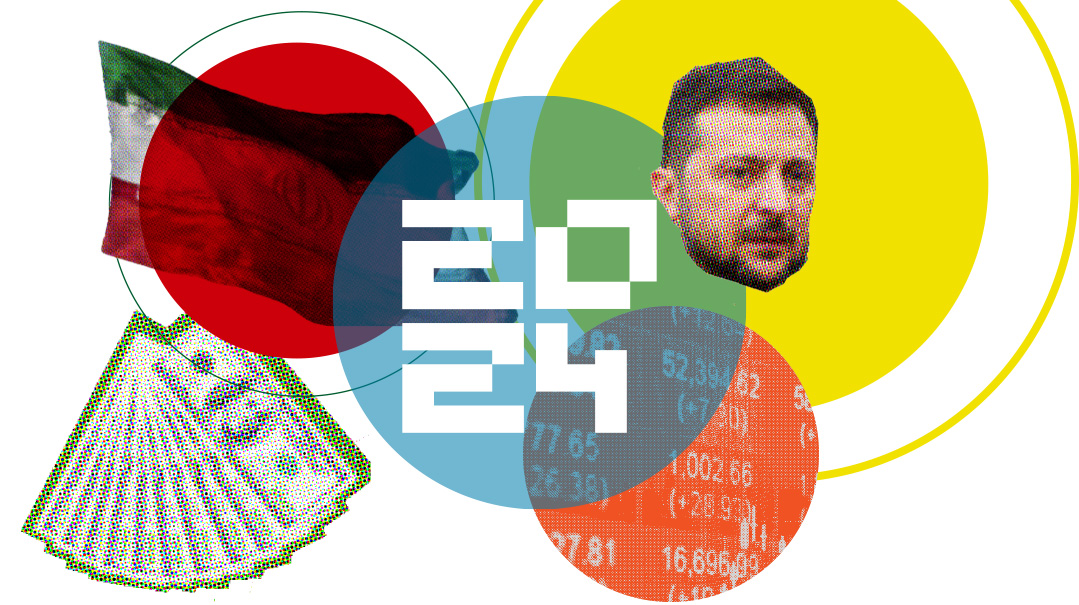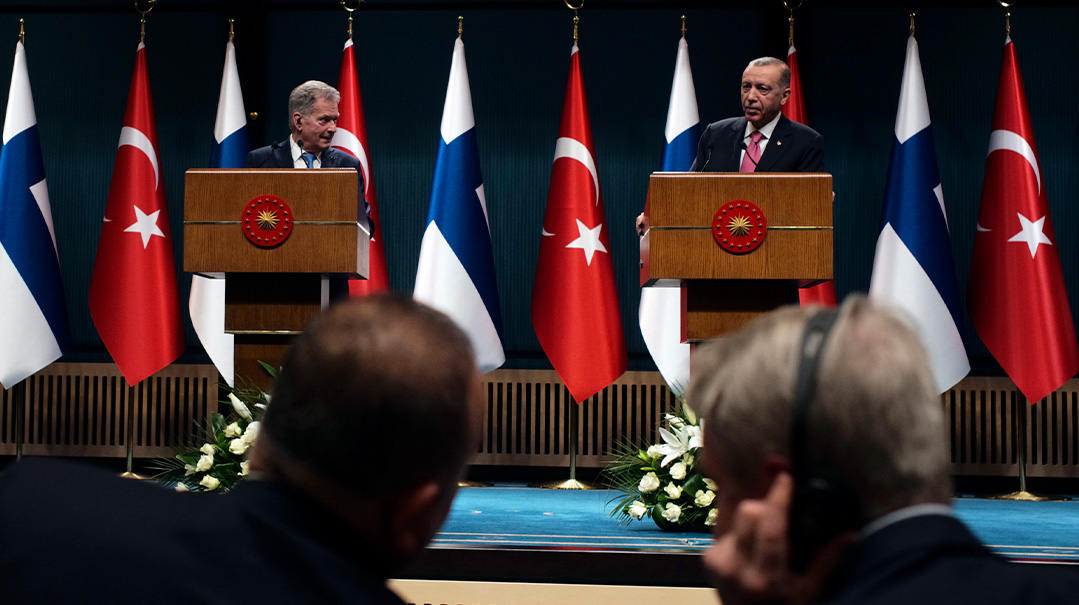Zelensky’s Shopping List

Why Ukraine's leader rushed to Washington

U
krainian president Volodymyr Zelensky was in Washington last week for a whirlwind 24-hour visit laden with symbolism, to thank America for its heavy investment in his country’s fight against Russia — and to ask for a lot more.
Ten months ago, few believed Ukraine could not only survive war for 300 days but also deal humiliating setbacks to the Russian army. But after sending three aid packages totaling $21 billion, in a year of spiking inflation and with an economy teetering on the brink of recession, US leaders are now beset by questions on Kyiv’s latest request package.
Can Ukraine win outright on the battlefield? Even if it can, can America afford to foot the bill? These questions have assumed a political dimension, as continued support for Ukraine has grown increasingly unpopular among Republicans, who will have a narrow majority in the new House of Representatives soon to be sworn in. President Joe Biden will no longer be able to rush funding through Congress as before.
Why aren’t all Republicans eager to play ball with Zelensky? During the Cold War era, the GOP took a hard line against Russian expansionism, albeit in the form of Soviet Communism. But now an “America First” wing has gained ascendancy, hearkening back to the old Republican position before World War II. That wing took power during the administration of Donald Trump, who was blunt about his reluctance to contribute to NATO and to America’s traditional postwar role of protecting Europe.
Some members of this wing even see Putin as someone the US can deal with. Maybe not as an ally, but as a negotiating partner. “Wouldn’t it be great if the US and Russia could get along?” Trump used to ask. For those Republican members, there’s little to no reason to poke the Russian bear. Other Republicans are on board with supporting Ukraine, but believe current funding levels already exceed what the US should give a country that is not a major ally.
For these reasons, Zelensky saw his visit as key to maintaining America’s support. He addressed a joint session of Congress in his trademark green T-shirt, reading his speech without a teleprompter, running his finger across the page. His direct appeal in English left a profound mark.
Zelensky emphasized that American aid to Ukraine was not charity but an investment in global security, and made clear that while Ukraine will never surrender, it won’t ask America to fight its battles.
Zelensky also paid a warm visit to the White House, thanking Biden for his leadership and awarding him a Ukrainian military medal. He also took the opportunity to ask for strategic weapons, such as the Patriot anti-missile system and the MGM-140 Army Tactical Missile System (ATACMS), which the US has hitherto resisted giving him.
Biden, for his part, agreed to give Zelensky a single Patriot missile battery. Sending a Patriot battery did represent an increase in US support for Ukraine; it is the first time Washington is providing a major defensive weapon to be used against Russia. This first battery is mostly symbolic, but Zelensky clarified at a joint press conference that he wants more of them, to essentially close his country’s skies.
Robert Romanchuk, a professor of Slavic and Ukrainian studies at Florida State University, explains why Biden didn’t give Zelensky everything on his list.
“Defensively, the Patriot system is a big boost, but my understanding is that the US is sending only one system to Ukraine, which will only be able to protect one location — Kyiv,” says Romanchuk. “Moreover, Patriot missiles are very expensive, so they can’t be used to shoot down the Iranian drones and small ballistic missiles Russia is using.
“Long-range ATACMS missiles would be a game changer, but the US will not send them to Ukraine for various reasons, [such as a] fear of escalation if they are used against legitimate military targets in Russia, and fear of losing the support of NATO allies in Western Europe.”
Scrappy Underdog
Asking for missiles systems may have been awkward, but that was a walk in the park compared to the really complex part of Zelensky’s trip — the appeal for bipartisan support in Washington, where that concept is quickly becoming outdated.
Professor Romanchuk says Zelensky came well prepared — he is “not a fool,” and he “understands that Ukraine needs the support of both US parties in the long run,” because this will be a long war.
“His speech to Congress hit the main points that still unite most Americans,” Romanchuk says. “What is really remarkable is that Ukraine continues to enjoy so much US popular support. Some argue that this is because it is winning, and Americans like winners as much as they like underdogs. Zelensky must understand this too.”
Yet as 2023 dawns on a more complex political chessboard in Washington, and with memories of the 2021 US pullout from Afghanistan still lingering, many international observers are wondering how long support for Ukraine will last.
Romanchuk says US support would flag only if Ukraine starts losing badly on the battlefield. “I don’t imagine [that] happening, as the Ukrainian Armed Forces outperform the Russians in every way, and dramatically so, and the state of the war for them is a source of cautious optimism.”
Another complication could arise if the war goes too well for Zelensky. Kyiv’s endgame for the war, Romanchuk says, will be to restore Ukraine’s internationally recognized borders, including Donbas and Crimea. “This is Zelensky’s and the Ukrainian population’s openly stated goal — and some members of the Biden administration are a little lukewarm about the latter, as they continue to fear ‘escalation.’
“I expect that we could reach this endgame where the Ukrainian Armed Forces could restore Ukraine’s pre-February 2022 de facto borders relatively soon, quite possibly sometime next year. What happens then with US support is anyone’s guess, but my sense is that the US would not actively deter the Ukrainians, and would continue supplying aid, even if they would still resist giving the most-requested offensive weapons.”
Romanchuk advises that America’s “heavy spending” on Ukraine really has to be put in context, both in dollar terms and expected return on investment. If Ukraine emerges victorious from this war, it will be very good for democracy and very frustrating for authoritarianism, and not only in Russia.
“My understanding is that most of the aid given Ukraine thus far has been in the form of obsolete or warehoused equipment, such as weapons and armor that would be replaced anyway, and not spending in dollars,” he says. “Also, one might point out that the US spent $2.3 trillion in Afghanistan, which achieved little of lasting value. Support for Ukraine is a relative drop in the bucket.”
(Originally featured in Mishpacha, Issue 942)
Oops! We could not locate your form.







